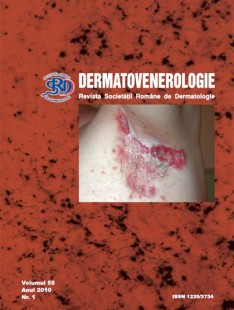General reviews
Catestatine involvement in antiinfectious skin defence
AMPs production in skin is a primary system for body defense against pathogens or toxicity. Many cell types that permanently reside in the skin produce AMPs, including keratinocytes, sebocytes, eccrine glands, and mast cells.
AMPs are physiologically active peptides that initiate and coordinates many components of innate and adaptative immune system.
Skin and neuroendocrine system have a close relationship. Antibacterial, antiviral and antifungical granins activity in skin is sustained by prochromacin, chromacin I and II, chromofungin, vasostatin I, pancreastatin, catestatin expression in keratinocytes, mononucleates cells, Merkel cells.
This review summarizes most recent data about catestatin, neuroendocrine molecule secreted and induced in epidermis after tissue damage or infection, offering new informations regarding communication between cutaneous immune system and nervous system.


